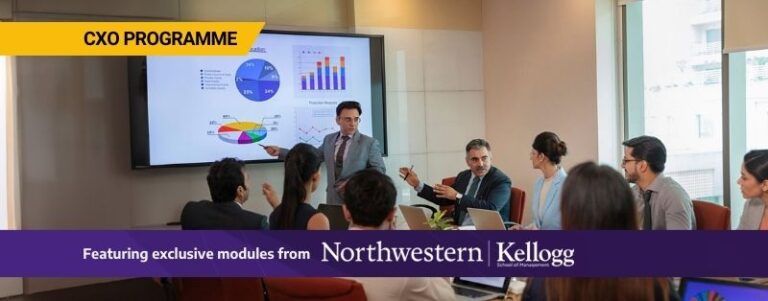How to Build a Risk Management Process: A 10-Step Guide

- Why is Risk Management Important in Finance?
- What are the Key Steps in the Risk Management Process?
- How Can Finance Professionals Effectively Identify and Assess Risks?
- What are Common Risk Mitigation Strategies Used in the Finance Industry?
- How Can Managers Ensure That Risk Management Processes are Implemented Successfully?
Think about how you would steer a ship in a dangerous sea. In the finance world, it is very important to guide your organization expertly through uncertainties and risks. This is the reason why we need a strong risk management process. It serves as a compass to ensure decisions are taken with the ultimate aim of safeguarding an organization’s financial health.
Hence, risk management is crucial in finance. According to PwC’s 2022 Global Risk Survey, 70% of business leaders are boosting their total expenditure on risk management technology. Having a clearly defined process for managing risks assists in foreseeing these threats, evaluating how they might affect the situation, and then implementing measures that will effectively reduce or eliminate them.
Why is Risk Management Important in Finance?

The financial world is always changing, and unexpected things can have a big impact on your money situation. Having a strong process for managing risk is very important because it lets you:
- Identify potential threats by regularly scanning the environment to recognize problems before they occur
- Lessen monetary setbacks by creating tactics to lessen the effect of unfavorable events on finances
- Boost decision-making by becoming more knowledgeable in making financial decisions
- Ensure better regulatory compliance when firms have a written risk management process
A strong risk management process assists firms in understanding intricate regulations and evading legal complexities. Furthermore, companies that handle risks well on a regular basis build trustworthiness and honesty, which could draw investors and enhance their market standing.
ALSO READ: What is Financial Management? Its Nature, Scope and Significance
What are the Key Steps in the Risk Management Process?
1. Establishing the Context
The initial step in the risk management process involves setting the scope and defining the context for risk management. This includes understanding the business environment, setting objectives, and identifying the framework for risk evaluation.
2. Identifying the Risk
Risk identification is crucial as it determines which risks could potentially affect the project or business operation. Moreover, this step requires gathering information and using various techniques to pinpoint specific risks.
3. Risk Analysis
Once risks are identified, the next step is risk analysis. This phase assesses the likelihood and potential impact of each risk, helping prioritize which risks need immediate attention.
4. Evaluating the Risk
Next, risk evaluation involves comparing estimated risks against the criteria established during the context setting. Moreover, this helps determine which risks can be accepted and which must be mitigated.
5. Risk Treatment
Risk treatment is about finding the best ways to manage or mitigate the identified risks. Additionally, options might include avoiding, transferring, sharing, or even retaining the risk.
6. Implementing Control
Here is where the rubber meets the road with your risk mitigation strategies. This crucial stage translates plans into action by developing new policies, procedures, or training programs. For instance, if a risk assessment identifies a cyberattack vulnerability, you might implement a new cybersecurity policy outlining data access protocols and employee training on phishing attempts.
7. Monitoring and Reporting
A strong risk management process is a living document, not a document locked up in a dusty filing cabinet. Regular monitoring is essential to assess the effectiveness of your controls and identify any emerging risks. This might involve conducting internal audits, reviewing financial data for anomalies, and staying abreast of industry trends that could introduce new threats.
8. Communication and Training
It is paramount to ensure all stakeholders are aware of the identified risks and their roles in mitigating them. Regular communication keeps everyone informed, while training equips employees with the knowledge and skills to manage risks effectively. For example, conducting training sessions on fraud identification empowers employees to be vigilant and report suspicious activity.
9. Testing and Review
The risk landscape constantly evolves, so your risk management process shouldn’t be static. Periodically test any and all strategies through simulations or scenario planning to ensure their effectiveness. Regularly review and update your approach based on lessons learned, emerging best practices, and changes in the internal or external environment.
10. Continuous Improvement
The risk management process is an ongoing cycle, not a destination. By continuously striving to improve one’s approach based on lessons learned and emerging best practices, one ensures that the company remains proactive and resilient in the face of ever-changing threats. This commitment to continuous improvement fosters a culture of risk awareness and positions the business for long-term financial stability.
ALSO READ: What is the India Stack? How is it Driving Innovation in Our Industries?
How Can Finance Professionals Effectively Identify and Assess Risks?

1. Identification Techniques
Finance professionals use various techniques to identify risks, including SWOT (Strength, Weaknesses, Opportunities, Threats) analysis, and analysis of financial statements and market trends. These tools help them spot potential risks early.
2. Comprehensive Databases
Maintaining comprehensive databases of historical risk information can aid significantly in risk identification. Additionally, these databases provide a valuable reference point for identifying patterns and potential risk factors.
3. Utilizing Technology
Technology plays a crucial role in enhancing the capabilities of risk identification and finance risk assessment. Additionally, advanced analytics and artificial intelligence can predict potential risks based on vast data analysis.
4. Expert Consultation
Consulting with industry experts can provide insights into unique risks associated with specific financial sectors or markets. Moreover, these insights can enhance the accuracy of risk identification and assessment.
5. Continuous Monitoring
Lastly, continuous monitoring of financial activities and market conditions can help promptly identify new risks. Also, staying updated with financial news and economic indicators is equally important.
ALSO READ: Is Crisis Management Effective in Improving Business Performance? Find out
What are Common Risk Mitigation Strategies Used in the Finance Industry?
1. Risk Transference
Transferring the risk to another party, such as through insurance or outsourcing, is a common strategy. This allows companies to focus on their core operations without bearing all the risk burden. Furthermore, risk transference also involves legal contracts that can shift financial risk to other parties, which can be crucial in managing large-scale projects or investments.
2. Risk Avoidance
Another approach is to avoid risky ventures or investments altogether, especially if the potential losses outweigh the gains. This strategy involves thorough risk analysis and sometimes rejecting opportunities that do not align with a company’s risk tolerance or strategic goals. Additionally, risk avoidance helps preserve capital and maintain operational stability.
3. Diversification
Diversifying investments and revenue streams can spread risk and reduce the impact of a potential financial downturn. Moreover, this strategy involves investing in different asset classes or expanding into new markets, which can buffer the organization from sector-specific downturns. In fact, diversification is a core principle in portfolio management, aimed at optimizing returns by investing in varying areas that would each react differently to the same event.
4. Hedging
Hedging against risk, using financial instruments such as options and futures, can protect against losses from adverse price movements. It is often used in currency and commodity exposures, where markets can be unpredictable. However, remember that effective hedging strategies require a deep understanding of market conditions and risk tolerance.
5. Tightening Internal Controls
Strengthening internal controls and governance can mitigate risks associated with fraud and operational inefficiencies. Regular audits and compliance checks further ensure adherence to risk management policies. Enhanced internal controls also improve transparency and accountability, helping to detect and address irregularities swiftly and effectively.
ALSO READ: Who is a Financial Manager? Salary, Skills and Career
How Can Managers Ensure That Risk Management Processes are Implemented Successfully?
1. Leadership Buy-In and Commitment
First and foremost, securing leadership buy-in and commitment is essential. An organization’s senior management needs to champion the importance of risk management and actively participate in the process. This sets the tone for the entire company and demonstrates the value placed on proactive risk mitigation. For example, a CEO who consistently emphasizes the importance of risk management during meetings and allocates resources for risk mitigation initiatives sends a clear message that risk management is a priority throughout the organization.
2. Clear Communication and Training
Effective communication is paramount throughout the risk management process. Clearly communicate the identified risks, risk mitigation strategies, and individual employee responsibilities to all stakeholders. Invest in training programs to equip employees with the knowledge and skills required to effectively manage risks in their respective roles. In addition to traditional training sessions, consider developing online modules or incorporating risk management discussions into team meetings to ensure continuous learning and awareness.
3. Integration With Existing Processes
For seamless adoption, integrate the risk management process with existing business processes. This avoids creating a siloed function and ensures risk considerations are factored into everyday decision-making. For instance, risk assessments can be integrated into project planning stages to proactively identify and address potential roadblocks. By doing so, you ensure that potential risks are considered from the very beginning of any project, allowing for timely mitigation strategies to be implemented.
4. Continuous Monitoring and Adaptation
Regularly review and update the risk management process based on lessons learned, emerging best practices, and changes in the internal or external environment. Furthermore, conducting regular risk simulations or scenario planning exercises can test the effectiveness of your risk mitigation strategies and identify areas for improvement.
5. Fostering a Culture of Risk Awareness
Finally, cultivate a culture of risk awareness within the organization. Encourage employees to identify and report potential risks. Recognize and reward employees who proactively contribute to the risk management process. This fosters a sense of shared responsibility for financial well-being and empowers employees to be invested in safeguarding the business against risk.
Such strategies can thus help to ensure that the risk management process becomes a valuable tool for navigating the ever-changing financial landscape and promoting long-term financial stability.
ALSO READ: What are the Types of Business Finance?
These details definitively show that a well-structured risk management process is vital for financial stability and success. Moreover, by following the outlined steps and strategies, finance professionals can effectively manage and mitigate risks. Those looking to deepen their expertise in financial risk management should consider exploring Emeritus’ online finance courses. Enroll and gain advanced insights and practical skills for mastering these challenges.
Write to us at content@emeritus.org





